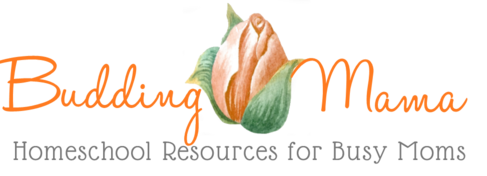Are you a homeschooling mom needing some guidance on how to assess what your child should be learning?
While, it is important to remember that every child is different and that these are just general guidelines to use as a framework of what to teach and look out for.
These metrics are for young children under the age of 10. Included are descriptions of what you some concepts you should be teaching as well as behavioral traits your little one might exhibit during that time.
The educational concepts are only a general idea because there is so much you will be teaching and even more that they will be learning on their own.
Remember: Children are DIFFERENT. The reason homeschooling is so successful is that you do not have to put your child in a box. You can go faster or slower as needed. Take advantage of that.
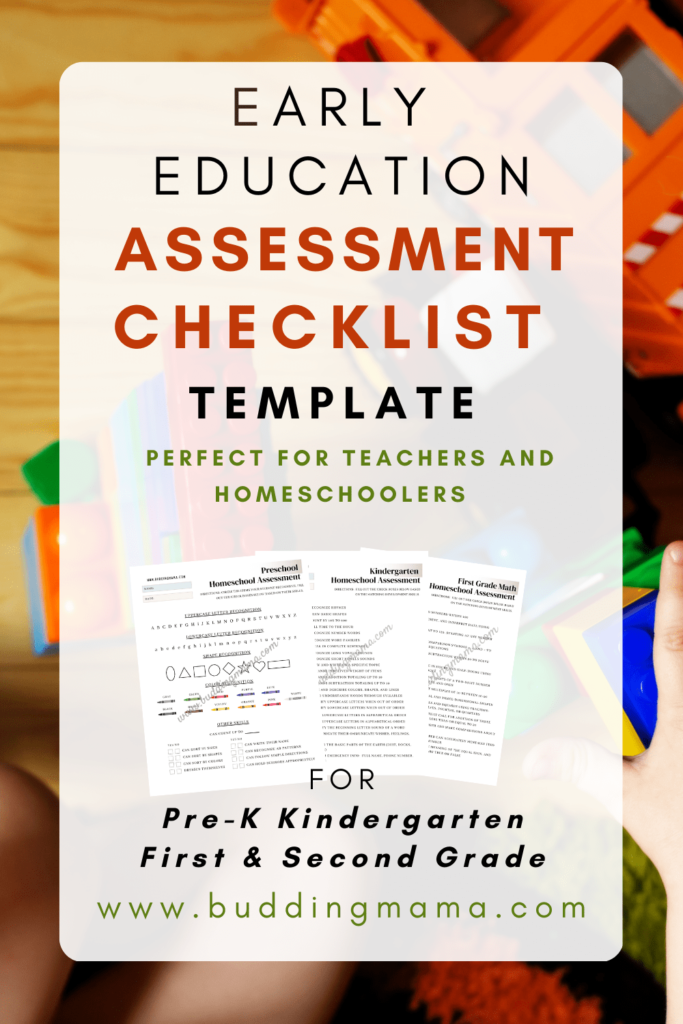
Don’t Forget:
While, these are going to be a great starting point on how to find curriculum that you can use to assess your child’s learning it’s important to remember to truly make the most out of homeschool you must teach to your child’s strength.
To do this you will want to choose a teaching style that compliments your child’s learning style. For an in-depth look into both teaching and learning styles, you will want to get yourself a copy of “The Ultimate Guide to Homeschooling for Beginners”.
It also reviews additional behaviors and milestones for the ages mentioned above and goes through the remaining grade levels up to fifth grade. It is a homeschool must-have.
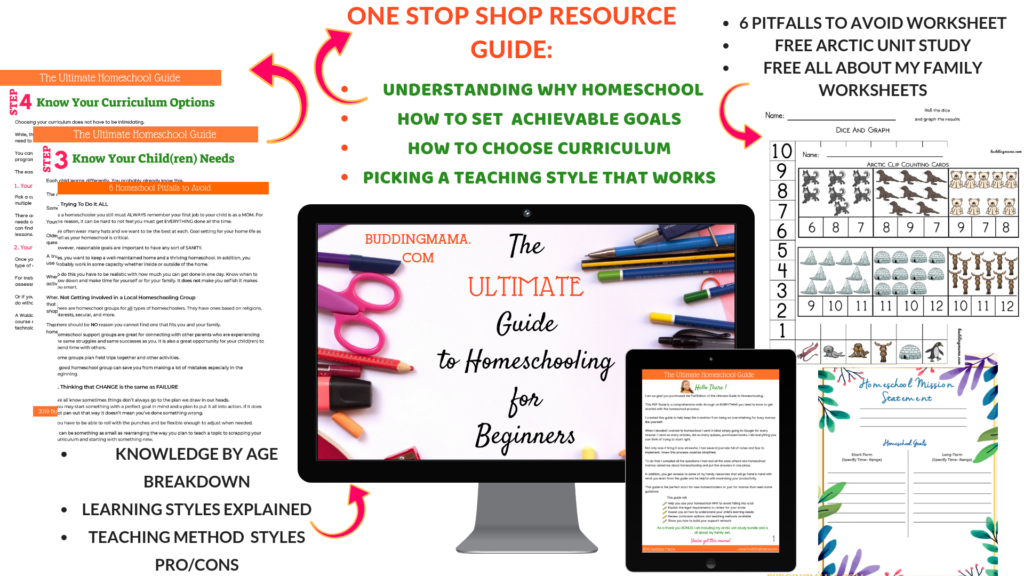
Let’s Get Started:
Toddlers (under 3):
Learn:
- Colors & Shapes
- ABC’s
- Fine motor skills
- Numbers 1-20
Behaviors:
- Show empathy & sympathy
- Give hugs and kisses
- Use ‘no’ often
- Desire to help
Ways to Teach This:
Through play, educational toys, and activities. Talk about the different colors of everything when inside, outside playing, grocery shopping etc. Try out some toys like shaping matching or sorting cubes.
Say the ABCs at different times in the day. Count when cooking, play hide & seek, or count the sidewalk cracks when walking. And for fine motor skills practice line tracing, safety scissor cutting, and do-a-dot activities.
Fine Motor Activities:
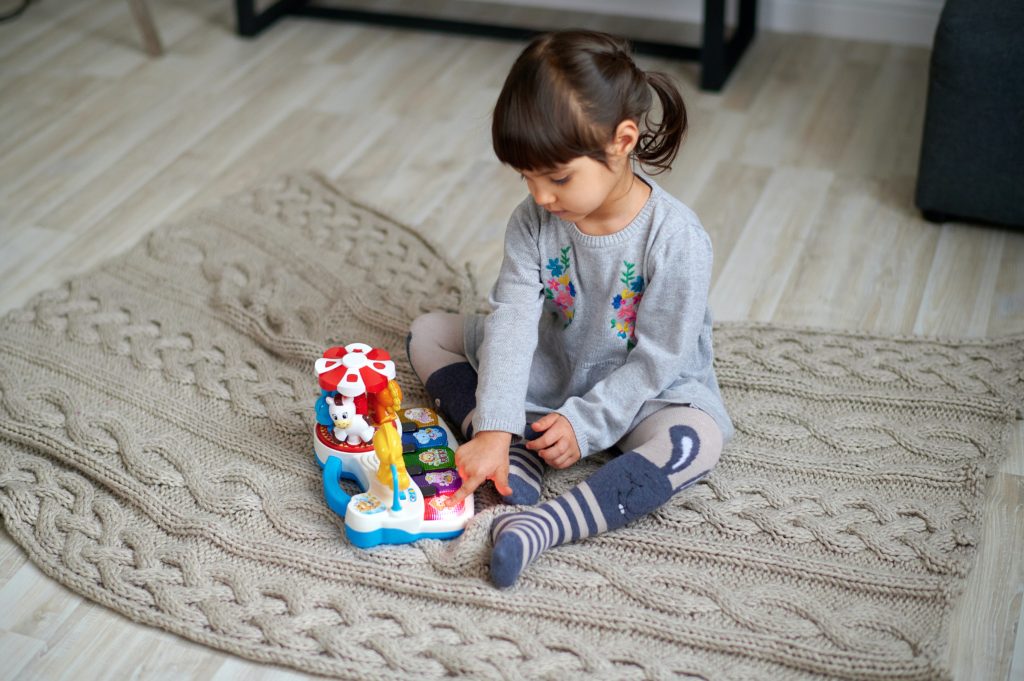
- Alphabet Letter Crafts
- Animal Wall Counter [subscriber freebie]
- Shape Tracing Pages
- Line Tracing Pages [subscriber freebie]
Preschoolers (Ages 3-4)
Learn:
- Draw specific shapes
- Sort by color, shape, or sizes
- Match letters to sounds
- Know their name and how to write it
Behaviors:
- Develop their balance and control
- Improved hand-eye coordination
- Positive interactions with adults
- Handles their emotions and impulses more
Ways to Teach This:
Play is still essential at this age. Continue using educational toys and daily interactions to practice learning. You can also add pretend play with telephones and simple worksheets with activities or crafts.
Have them sort their toys by color, size, or shape. Or even sort their clothes by color. Create fun, simplistic drawings such as houses, sky scenes, and people to practice creating specific shapes.
Shapes/Letter Activities:
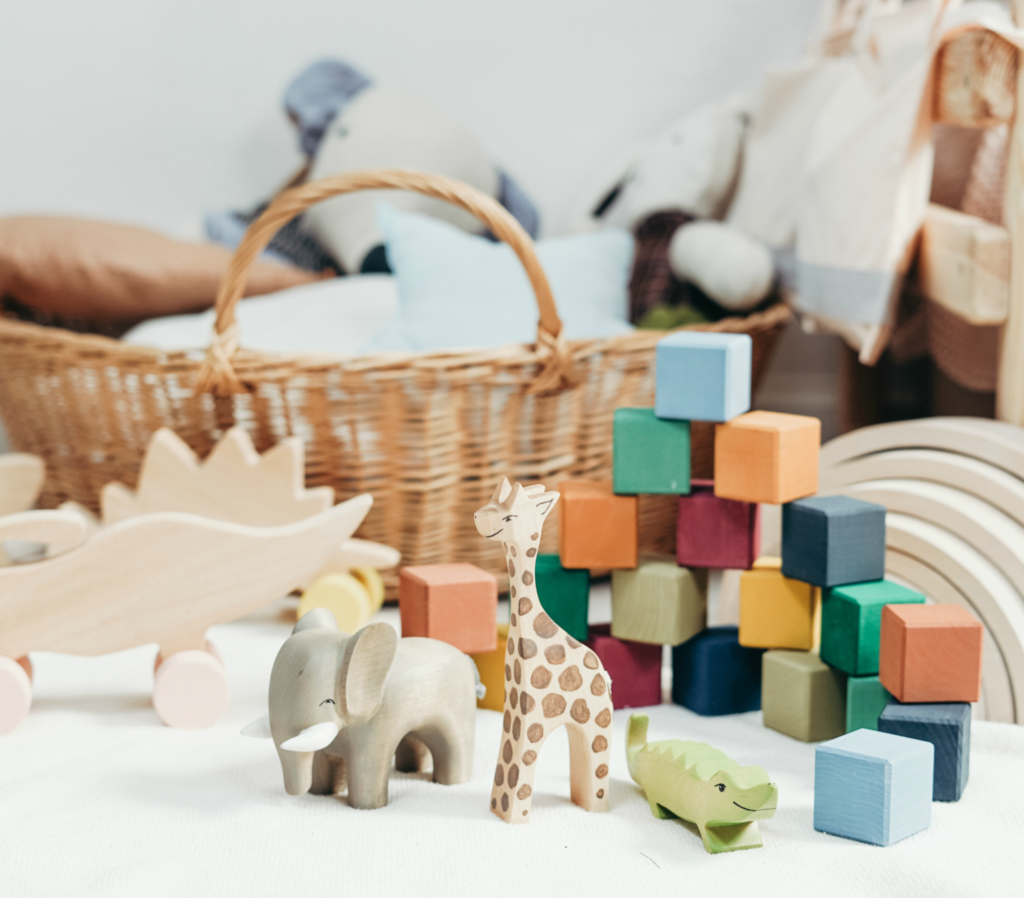
- Alphabet Puzzles [subscriber freebie]
- ABC Daily Worksheets
- Shapes Worksheets [subscriber freebie]
- Shape Clip Cards [subscriber freebie]
Kindergartners (Ages 5-6)
Learn:
- Understand rules & sharing
- Address & telephone number
- Count by 1,5,10,1000
- Time of day
Behaviors:
- May prefer playing with children of the same-sex
- Have a short attention span
- Start feeling embarrassed
- Be able to jump, skip, and hop
Ways to Teach This:
This is a great age to practice and implement a family emergency plan. Teach them to dial 911 for emergencies. Do practice calls where they say their name, address, and names of family members. Even practicing addressing an envelope can help.
Practice daily time telling moments and ask during morning, evening, night what time it is. You can even add in chores by time of day. For example, morning feed the pets, afternoon take dogs for a walk, night time wash dishes.
Physical Activities:

- Scavenger Hunt Pack
- Animal Yoga Cards
- Get Up & Active Ideas [subscriber freebie]
- Spell the Word Exercises [subscriber freebie]
First Graders (Ages 7-8)
Learn:
- Do simple chores like sweeping and making their bed
- Recognize coins and their values
- Basic addition/subtraction up to 20
- To tie shoes, button shirts, and zip zippers on their own
Behaviors:
- Able to ride a bike without training wheels
- May have a hard time staying attentive to directions
- Able to start self-correcting when reading or doing other tasks
Ways to Teach This:
Around this age it is a great idea to start implementing chores. Cleaning the room, sweeping the floors, etc. Create a morning routine where they are getting dressed on their own. Continue learning through play by having a pretend store where you buy items and then receive change through basic addition and subtraction.
You can include worksheets and activities that will build on these skills as well. Invest in play money and include adding and subtraction activities with your daily life.
Math Activities:

- Addition/Subtraction Ten Frames [subscriber freebie]
- Cookie Math Matching
- Turkey Counter Activity Pages
- Christmas Tree Hole Punching
Second Graders (Ages 9-10)
Learn:
- How to cook healthy recipes
- To give oral reports based on researched facts
- Basic multiplication facts through the 5’s
- Their months in order and tell time to the quarter hour
Behaviors:
- Can follow simple directions
- Capable of putting away their toys based on their own cleaning habits
- Practices using kind words and being respectful to their peers
Ways to Teach This:
At this age you will really start seeing some of the greatest strides in your child.
They will be growing in more ways than one. Take time to enjoy their growing vocabulary and the way their socio-emotional intelligence builds every day. The AMAZING part is they will start to become more aware of their own areas of struggle and success.
Your student should also be able to use their advancing language skills to work through conflicts that will naturally arise with their peers as they work more frequently in group activities. However, at the same time they will be able to show empathy, respect, and start to care deeply for those in their close peer groups.
Language/Literacy Activities:

- Fraction Shading Worksheets [subscriber freebie]
- MLK History Worksheets
- Flag Day Worksheets
- Step-by-Step Recipes for Kids
How-to Assess This–FREE ASSESSMENT PRINTABLE:
Compile different worksheets that can test these metrics or create your own material that you can use to review their progress throughout the year. You can do this in a casual or more formal setting. Remember to choose assessment methods that work for your child.
I would suggest doing an assessment at the beginning of the year, mid-way through the year, and then before their birthday or ‘school year’.
Grab a copy of the early education homeschool assessments you can find one for grade levels Pre-K to Second Grade.
It covers concepts based on the common core standards as well as developmental benchmarks for children at each age.
Got a student in a grade level higher than 2nd grade?
There is a part two coming out in the near future. Make sure you have join the VIP list to find out exactly when it is released.
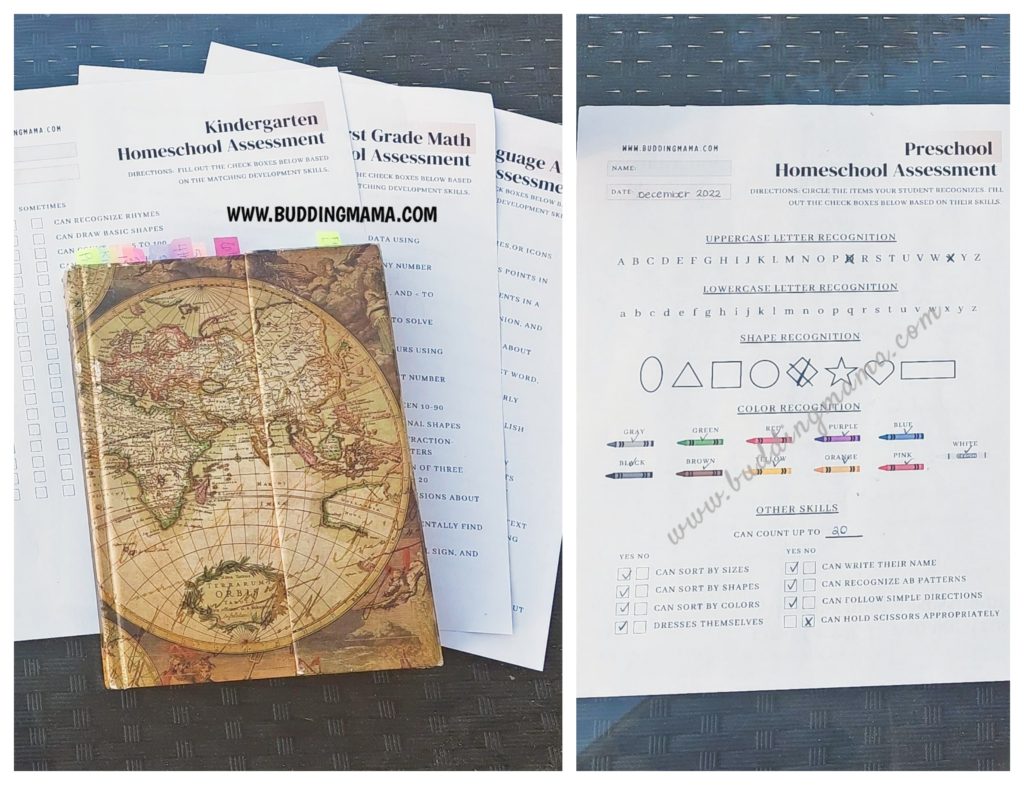
Use the link below to get the Assessment Freebie:
How To Get The Subscriber Freebies:
Many of the freebies to help you build on the critical skills at each level are EXCLUSIVE to Budding Mama VIPs.
It’s free to join and just requires your e-mail. As soon as you press the green button below you will get the secret password for the special freebies.
To access the library with the secret password click here. Each freebie is a download away once you are there.
Don’t stop getting on track just yet, go check out:
- Homeschool Schedule Template– An editable homeschool scheduler perfect for moms with children of any age. There is a free sample schedule included to assist you in crafting your own schedule.
- Homeschool Curriculum Planner– Editable 15-page curriculum planner that you can use to plan your entire year to align with your new scheduler. It covers everything from field trips to subjects to grading.
